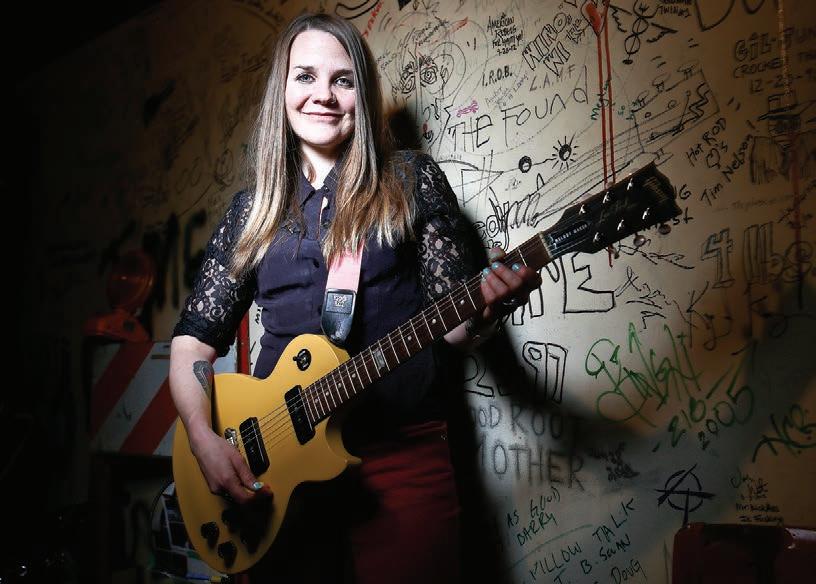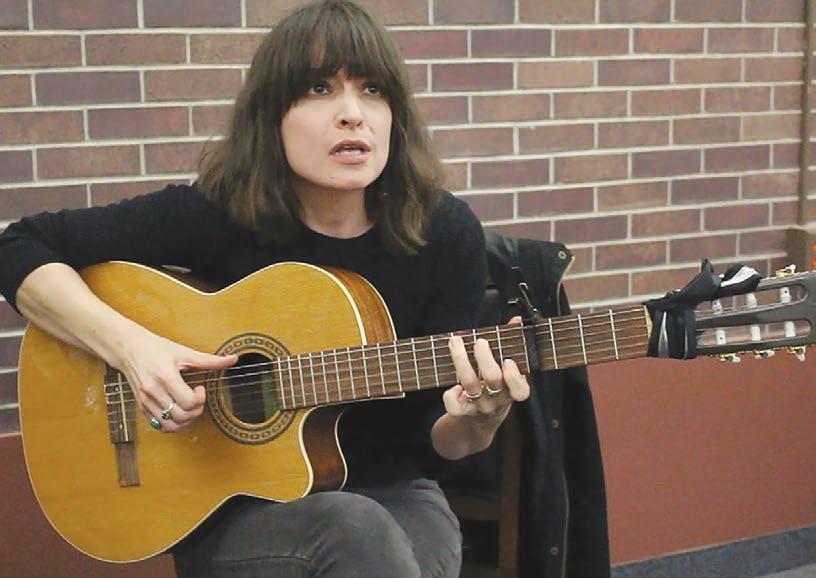
4 minute read
A LITTLE DINNER MUSIC
Musicians Face Special Challenges When Performing In Restaurants

BY TONY BENNETT
The thing about being a musician is, there are different types of gigs. ot every show is one where you re on a stage with good sound, playing to a rapt audience that hangs on your every word — in fact, even for established performers, shows can sometimes be challenges where a particular approach has to be taken. There s no handbook for this stuff.
laying music to an audience who isn t necessarily there for you is a common thing, and it often occurs in an environment where dining is the main focus. It s not easy to transition from playing for people who want to hear you to playing your music for people who are there to eat while you ply your trade in the background.
usician (and former uluthian) ary ue has played hundreds of shows over the years, and she admits it s still a challenge to perform in a situation that isn t centered around music.
I once played at a pub full of Packers fans eating burgers and fries on a unday, ue said. I was supposed to perform outside as part of a series, but it was only degrees out, so it was brought indoors. I was asked to play as soon as overtime was done, and the people at the bar sat with their ersey d backs to me watching the next football game. umbling stuff, but ue has learned with time to be prepared to treat every performance differently.
he s got a toolbox of approaches. If I bring people, or people come to hear me, I play to them, ue said. If someone turns around on their chair or ventures into the region where I play, I play to them. If people are chatting with their dining companions and seemingly paying no mind, then it is a paid live rehearsal to try out new material, to lengthen the songs with instrumentals, to shake things up.
“Performing in restaurants is not for the faint of heart, ue said. It is a dance for all involved to find the right volume, acoustics and energy to stay positive and offer the best entertainment for the environment at hand. It s a beautiful thing to be able to share music, and also to dine and be entertained.
ellow former uluthian yan an looten has also developed thoughts on the matter over his years as a performer. Ideally, what makes a good dinner/music setting is one where the customers are accustomed to having live music, he said. They expect it and know how to coexist with it. or a solo singer-songwriter like myself, that is optimal. It s all so dependent on the venue, too, because every place has a clientele uni ue to their establishment, which makes it very interesting. It takes a couple times playing to figure out how to work each room. ometimes it works, sometimes it doesn t.
“What makes for less-than-ideal playing conditions is indifference, Van Slooten said. “There o, I am specifically catering to the audience that I’m expecting to have. intentions are for having you there, and that carries over into the audience. Those rooms are very tough to read, because you re not sure if you should take the lead or sit back and simply be background music. It makes for an uncomfortable situation. hen I do dinner gigs, she said, I typically play guitar and sing a variety of generally crowd-pleasing recognizable music — like the Beatles and Hank Williams — that a 5-yearold can understand and that a 70-year-old appreciates.
As with ue, von Agassi has learned to accept that, sometimes, being a remarkable musician isn’t always enough.

Asked for an example of one of those situations, an Slooten paints a picture: “The room was full of people, I set up in a corner, and a big group stands around a couple tables I have my merch and tip ar on, right next to me. They’ve got their drinks spilling all around my stuff, they re loud, in my sightline, knocking my stuff over unapologetically. It’s all I can do to stay professional, but I have to remember that these are not my customers, but the venue s.
Ingeborg von Agassiz is a local performer who doesn’t have as many miles on her as Bue and Van looten, but she s certainly learned quickly over many performances in recent years how to deal with having to work in different modes and adapt.


“I don’t try to engage audiences who are not there for me, she said. I ust resign myself to the fact that I m ust the wallpaper for them, background music. I am not personally offended if people ignore me while I sing. I don’t get too bothered if people are talking, unless they are talking so loudly that I can’t hear myself. Then, it becomes extremely di cult to perform well.
It s clear, then, that the best thing for artists, venues and patrons to do is to mutually and actively try to create an environment that works for all. When everyone’s on the same page, that s when things pan out best.
“One of my favorite places to play backgroundmusic gigs has a comfy little designated stage area, a sound system with a monitor that is always set up and easy to plug into, a server (who) always cheerfully waits on me, and a prominently-placed tip ar that always gets filled, von Agassi said. It s a fun, positive atmosphere that I think the venue in question nurtures by having music regularly, so that the diners go there expecting and looking forward to music, versus a place that seldom has music. ❖









